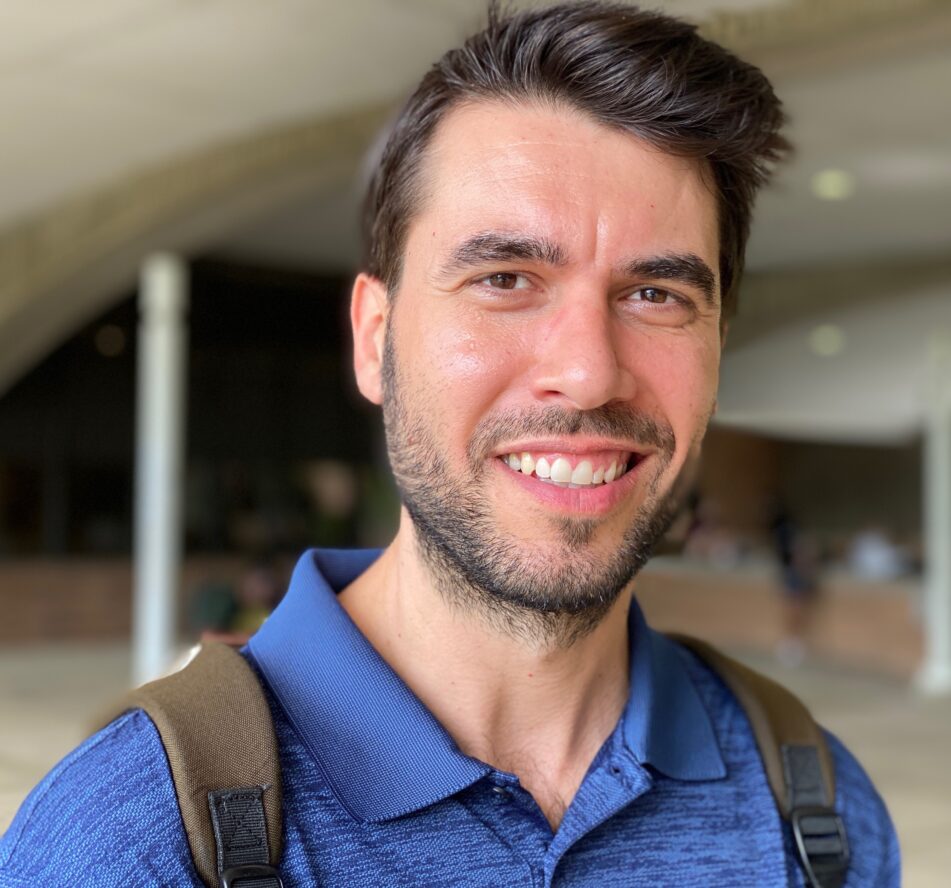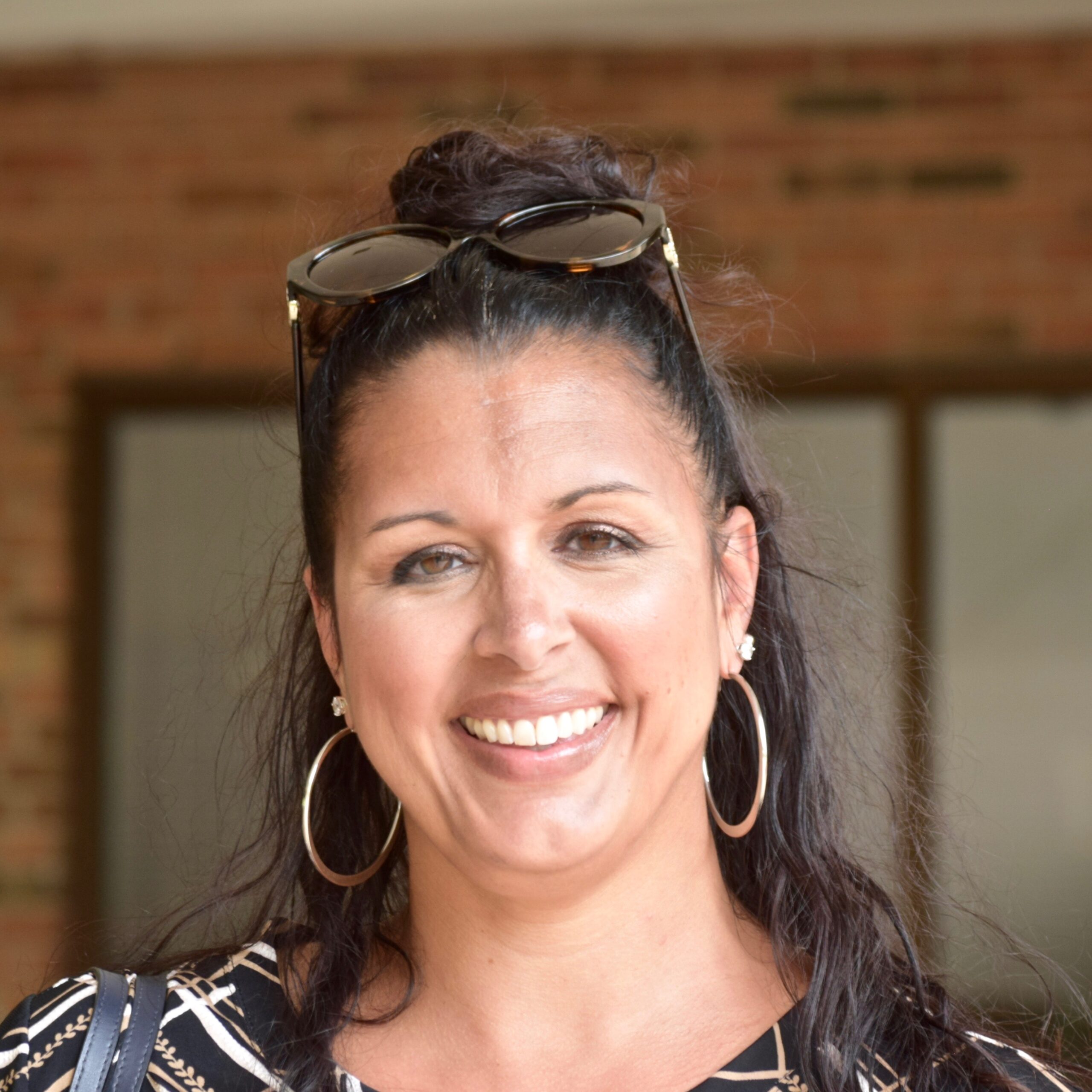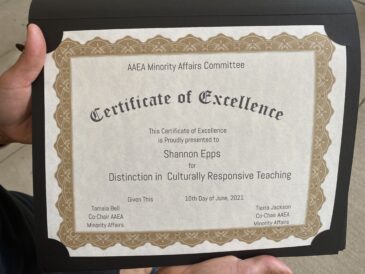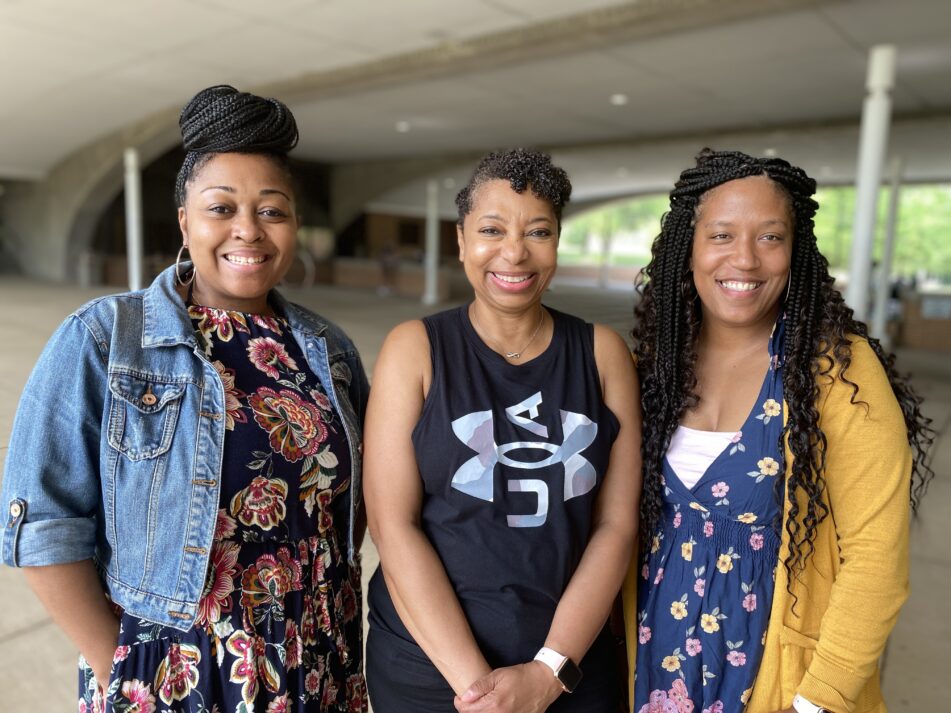By Jo Mathis/AAPS District News Editor
Three AAPS teachers have been honored for promoting learning environments that reflect their students’ social, cultural, and linguistic experiences.
The 2021 AAEA Culturally Responsive Teacher Award recognizes educators who consistently maintain high expectations, maintain a high degree of cultural competence and strive to develop critical consciousness among all of their students.
The award is sponsored by the Ann Arbor Education Association Minority Affairs and New Teacher Program. Chaired by Tamala Bell and Tierra Jackson, the program is a collaboration between AAEA and AAPS to hire, train, and retain new teachers as well as support minority teachers.
Thirty-four teachers across the district were nominated and recognized for their excellence in cultural responsive teaching. The committee selected the three winners based on the nominee peer recommendations by looking at the impact their teaching has on student achievement and celebrating and creating a safe space for students to develop critical consciousness around issues of race and diversity.
“We wanted to recognize all of the amazing work and accomplishments that are going on throughout the district with teachers working around issues of equity, social justice and culturally relevant pedagogy,” said Bell, who is also vice president of the AAEA.
This award—hoped to be issued annually from now on—was the vision of Lakewood Elementary teacher Noncy Fields, one of the Minority Affairs committee members. It is just the beginning of the Social Justice Summit that will begin this fall, according to Jackson, AAEA Minority Affairs and New Teacher co-chair and teacher at Logan Elementary.
“We will be kicking off the summit with a summer book club facilitated by Noncy, open to all teachers—new and veteran,” said Jackson.
Representing elementary, middle and high schools, this year’s winners are:

Daniel Verdugo, Spanish Teacher, Huron High School
Career Path to present Role: I started teaching at Huron High School in 2018. I was born and raised in Spain, and I earned my bachelor’s degree at the University of Barcelona. My interest in foreign languages and cultures is one of the reasons I decided to become a foreign language teacher. Before joining Huron, I lived in Puerto Rico, where I taught Spanish, Social Studies, Community Service, and French.
How do you make sure your classroom is culturally responsive? It is important that students find safe spaces to discuss matters that affect them. A classroom is a great forum to engage students in critical conversations and to promote civic participation in their communities. At Huron, I began publishing Ñ! magazine, a multilingual media project that features students’ voices as they develop language proficiency and critical thinking. In the latest issue, Huron students present reflections about human rights and current events, as well as a special report on Sustainable Development Goals.

Kaitlyn Solar, fifth grade teacher at Pittsfield Elementary School
Career path to present role: I earned my bachelor’s degree in psychology from Michigan State University, then worked for the MSU Psychology Department and did nonprofit work in Lansing. Then I got my M.Ed. at the University of Michigan, student taught in AAPS, and work here now.
How do you make sure your classroom is culturally responsive? The short answer to a very large question is that culturally responsive teaching is student-centered and is not isolated to my classroom, but encompasses my whole life. I continuously work to know myself really well and to know the way my own identity interacts with people and systems in this world. There is no arriving at cultural responsiveness on a checklist. It is a practice that needs tending to every day. It means getting to know my students really well. I am here to guide and support their learning, not control it. I take their interests, skills, identities, and experiences into account in order to provide them with meaningful learning opportunities. In the voice of one of my students, “You stop lesson plans to talk about important things and let us talk freely.” My students are the center of this work. They drive the lessons, curriculum, and assessments. Finally, I’ll say that in order to create a culturally responsive classroom I take risks, push back, and speak out. I work every day in and out of the classroom to simultaneously dismantle and build our education system. It is uncomfortable, heart-wrenching, and joyful work. And it is necessary.


Shannon Epps, 6th/7th ELA and Academic Literacy teacher, Tappan Middle School
Career path to present role: I started teaching first grade straight out of Eastern and quickly realized this profession was exhausting and gratifying, but I truly revered the energy and resilience of my students. After 10 years in a first-grade classroom, I wanted a new challenge and decided to leap to middle school, and began teaching seventh and eighth grade. But I noticed I had a new challenge of finding material that was engaging and rigorous. I began at Tappan in 2016, and it has been such an incredible experience of beginning the journey with bright-eyed sixth-graders that are anxious about lockers to eighth-graders that leave the building as confident, independent learners.
How do you make sure your classroom is culturally responsive? I make sure my classroom is culturally responsive by providing a safe space for students to share, ask questions, and learn about experiences that involve people from all backgrounds. When providing content for my students, I provide material that activates experiences from my students along with time to share their stories. My classroom students begin to fully understand equity and that some students may need more support and time than others. As an educator, I will continue to advocate for all of my students, along with offering hugs, emotional support, and a learning opportunity that challenges, along with lots of time for laughter.

Pictured above left to right are Minority Affairs and New Teacher Retention Committee members Natasha Stewart (Logan), Tamala Bell (Thurston), and Tierra Jackson (Logan).

Be the first to comment